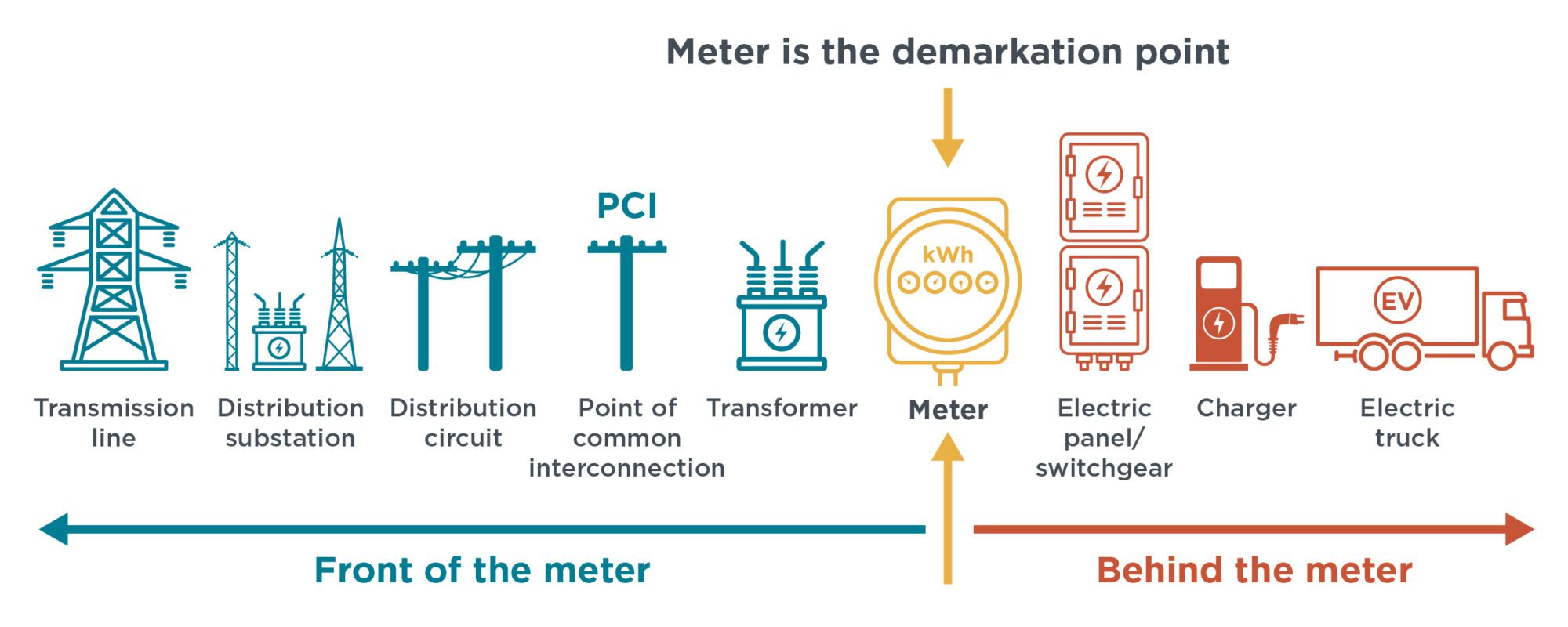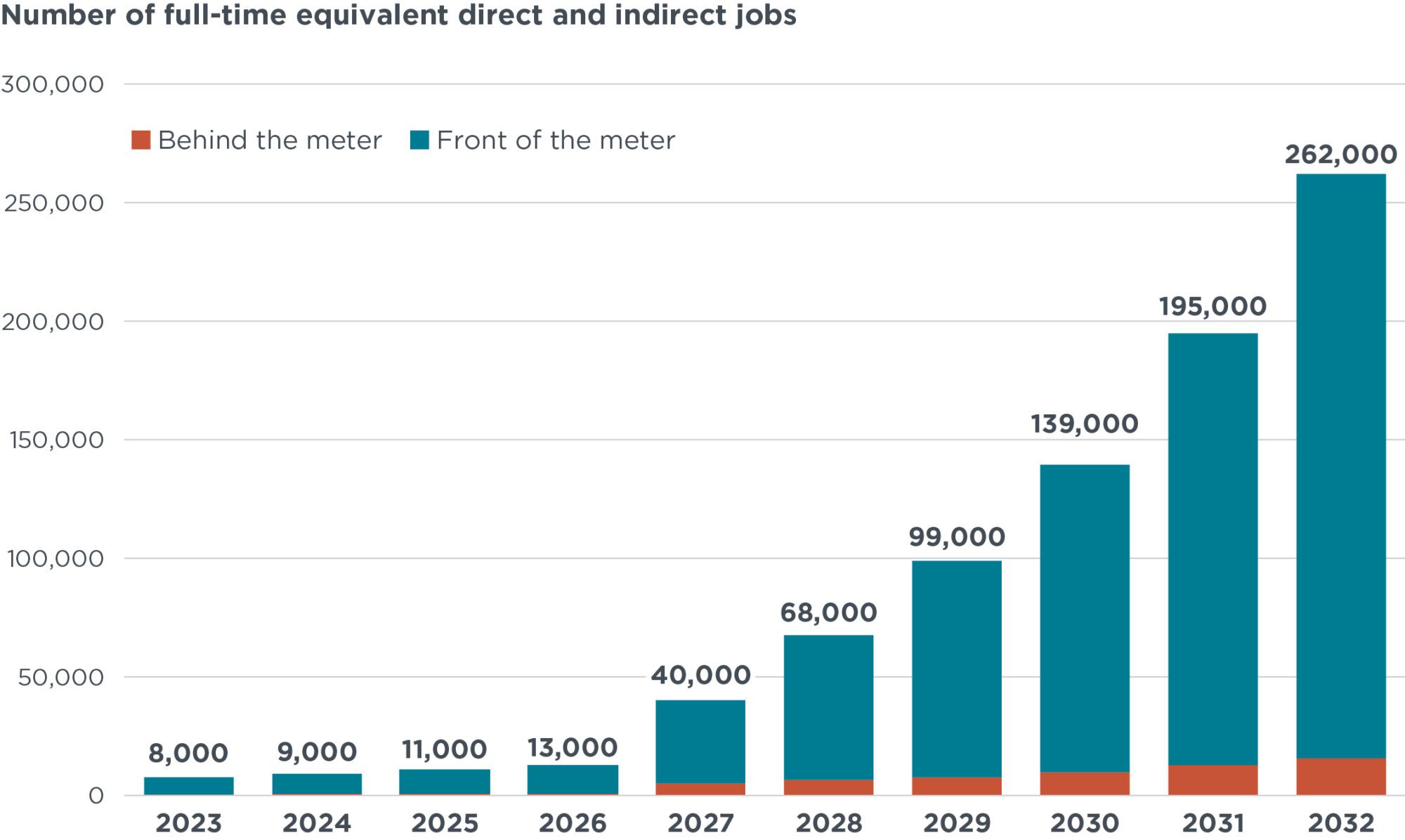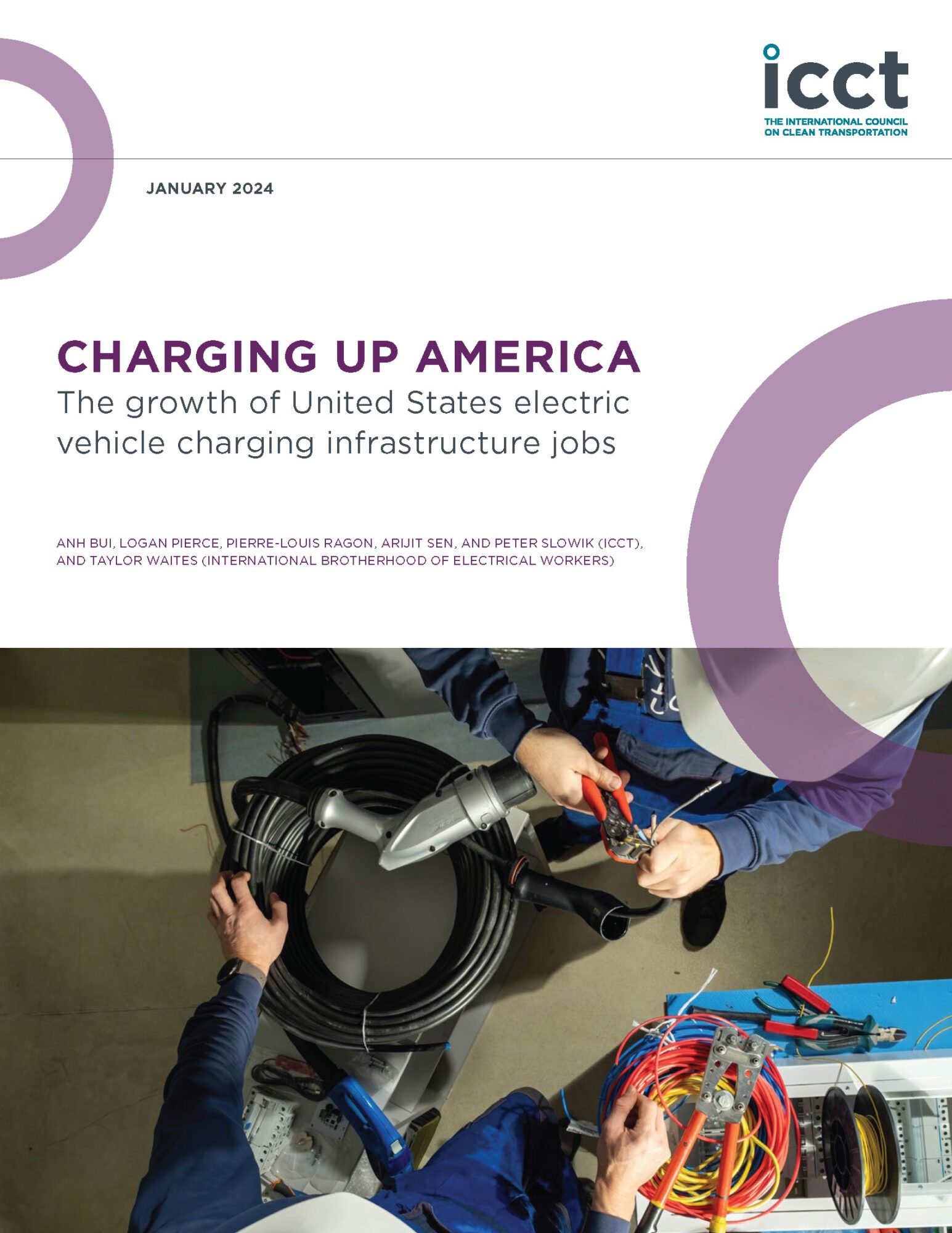Charging up America: The growth of United States electric vehicle charging infrastructure jobs
Blog
“Front-of-the-meter” jobs for charging infrastructure should be front of mind in the EV transition
Last week, we released a wide-ranging analysis estimating that more than 150,000 jobs could be needed in the United States to deploy “behind-the-meter” charging infrastructure for electric light-duty vehicles (LDVs) and medium- and heavy-duty vehicles (MHDVs) through 2032. The term “behind the meter” refers to the customer’s side of the electricity meter and the term “front of the meter” is used when talking about the utility’s side, where there’s infrastructure such as substations, transformers, and feeder lines (Figure 1).
For HDVs specifically, the new study estimated that the Environmental Protection Agency’s (EPA) proposed HDV Phase 3 greenhouse gas (GHG) standard could generate as many as 16,000 jobs by 2032, or about 10% of the national total. But that’s only part of the jobs story.
As we’ll explore here, when all the jobs to construct the infrastructure to channel megawatt-scale power to chargers at private depots and public charging plazas for battery electric trucks and buses are considered, the utility-side infrastructure in front of the meter is likely to require a workforce an order of magnitude larger than the workforce building out customer-side infrastructure.

Figure 1. Battery-electric MHDV charging infrastructure ecosystem.
Let’s look at a preliminary, top-down jobs estimate based on available national-level data. It’s sensitive to assumptions about how individual chargers are configured into charging stations, how expensive utility grid upgrades are at each charging station, and how utility investments translate into jobs in the economy.
Still, we make generally conservative assumptions and the eventual number of jobs created could be larger. First, while the total number of chargers is based on a projected level of zero-emission vehicle adoption supported by the EPA HDV GHG Phase 3 proposal, in previous analysis we found that market forces, aided by Inflation Reduction Act (IRA) incentives, can support a larger number of zero-emission MHDVs and may draw even greater investments in charging infrastructure. Second, we do not fully account for possible infrastructure investments upstream from the distribution substation to support the largest multi-megawatt installations with peak loads greater than 10 MW.
We arrived at the job estimates in Figure 2 by first aggregating the nameplate capacity of 100 kW, 350 kW, and 1 MW chargers into a total number of hypothetical charging stations. The cost of grid upgrades and connection costs for charging stations were taken from previous ICCT research and utility upgrade cost estimates by the National Renewable Energy Laboratory (NREL). Next, we converted dollars invested in distribution grid capacity into a total number of direct and indirect jobs in the United States required and supported by these investments; this is based on an economic impact analysis of a utility’s substation transformer upgrade costs and other high-level utility infrastructure economic impact studies (here and here). Direct jobs are those related to the core construction and electrical work, for example installing substations and laying feeder lines; indirect jobs are upstream manufacturing, administrative, and other jobs not immediately involved in utility upgrade activities.
Under the most optimistic level of electrification likely to occur with the proposed EPA HDV Phase 3 GHG rule, we project more than 493,000 overnight 100 kW chargers, nearly 17,000 fast 350 kW chargers, and around 12,800 ultra-fast 1 MW chargers by 2032. We estimate up to $21 billion would need to be invested in distribution grid capacity to support these chargers, also by 2032.
These calculations, combined with the behind-the-meter jobs our colleagues estimated, suggest approximately 262,000 direct and indirect full-time equivalent jobs would be necessary to support the most optimistic rates of electrification to meet the EPA proposal by 2032 (Figure 2). More than 94% of these jobs come from what would be needed for utility-side infrastructure deployment. These front-of-the-meter jobs are wide-ranging and include substation construction, laying conduit, wiring, installing transformers and meters, laying feeder lines and their foundations, and manufacturing electrical grid components and assembly of these assets.

Figure 2. Estimated direct and indirect jobs created from infrastructure investments in MHDV electrification under the most optimistic rates of electrification to meet the EPA Phase 3 GHG proposal by 2032.
Billions of dollars in public investments are already funding charging infrastructure deployment at the federal and local levels. Private sector investments from companies such as TerraWatt Infrastructure, WattEV, Forum Mobility, and GreenLane reflect this growing industry.
Our estimates suggest the vast majority of charging infrastructure job creation will occur not in the manufacturing and installation of chargers themselves, but in the distribution grid assets that power the chargers. Finalizing the EPA Phase 3 proposal would generate significant momentum toward this job creation and the potential is even greater when accounting for the additional market potential shaped by IRA incentives. It’s key that utilities and regulators not only recognize the potential in constructing infrastructure assets in front of the meter, but that they begin planning to deliver front-of-the-meter assets and prepare their workforce in a time frame consistent with the EPA Phase 3 proposal and beyond.
Author
Related Publications
CHARGING UP AMERICA: THE GROWTH OF UNITED STATES ELECTRIC VEHICLE CHARGING INFRASTRUCTURE JOBS
This paper projects the number of jobs inside the U.S. that will be needed to expand electric LDV and MHDV charging infrastructure to meet annual charging needs of a growing electric vehicle fleet. This paper projects the number of jobs inside the U.S. that will be needed to expand electric LDV and MHDV charging infrastructure to meet annual charging needs based on U.S. EPA’s recent proposed regulations through 2032.



